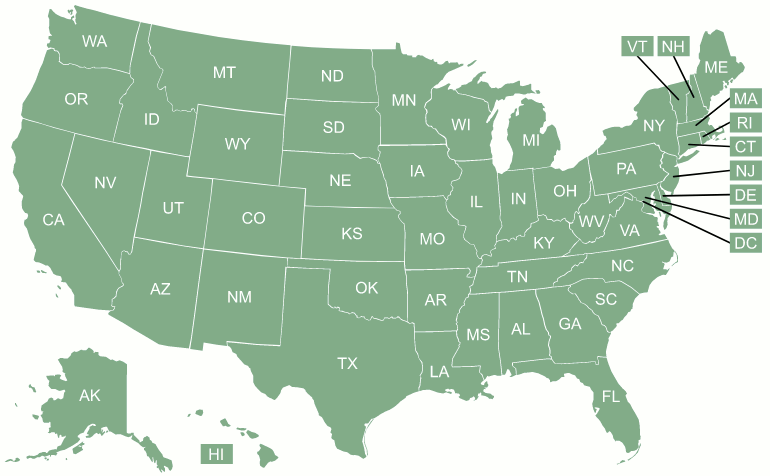Medicare is a federal program, covering more than 64 million seniors and disabled Americans throughout the country. Medicare beneficiaries in most areas have the option to get their coverage via private Medicare Advantage plans, and nearly 46% do so.
The remaining beneficiaries have Original Medicare, but 81% of those enrollees supplement their coverage with employer-sponsored coverage, Medigap, or Medicaid.
And more than 23 million Medicare beneficiaries also purchase stand-alone Medicare Part D Prescription drug coverage, since Original Medicare does not cover outpatient drug costs (most Medicare Advantage plans do include Part D coverage; more than 26 million Medicare beneficiaries have Part D coverage as part of their Medicare Advantage plan).
There is significant variation from one state to another in terms of availability, pricing, and regulation of private Medicare plans, and Medicare beneficiaries in different areas often make different choices about their coverage.
Are Medicare enrollment deadlines the same in every state?
For Medicare Part A and Part B, Medicare Advantage, and Medicare Part D, enrollment deadlines are the same in every state. But for Medigap (Medicare Supplement coverage), some states have enrollment opportunities that go beyond the minimum requirements set by the federal government. All of this is discussed in more detail below.
Medicare Part A and Part B
Medicare Part A and Part B are available when a person turns 65 or when they have been receiving disability benefits for 24 months (or have been diagnosed with ALS or end-stage renal disease). The enrollment window lasts for seven months, including three months before the first month coverage can begin as well as the three following months.
It’s possible to delay Part B enrollment if you’re still working and covered by an employer’s plan (or if your spouse is still working and you’re covered on their plan). But there’s a lot you need to know about how this works, in order to avoid potentially owing late enrollment penalties later on.
Medicare Advantage and Part D
Federal guidelines call for an annual open enrollment period (October 15 to December 7) for Medicare Advantage and Medicare Part D coverage in every state. And there’s also a Medicare Advantage open enrollment period (January 1 through March 31) that allows people who already have Medicare Advantage to switch to a different Advantage plan or switch to Original Medicare. But while these provisions apply nationwide, plan availability and prices are different from one state to another.
Medicare uses a star rating system for Medicare Advantage and Part D plans, and the availability of high-quality plans is not the same in every state.
Not surprisingly, the popularity of Medicare Advantage plans varies significantly from one state to another: Only about 2% of the Medicare population is enrolled in Advantage plans in Alaska. (There are no individual Medicare Advantage plans available at all in Alaska. People with Advantage coverage there have employer-sponsored Medicare Advantage plans.) But in seven states, more than half of all Medicare beneficiaries are enrolled in Advantage plans.
Part D prescription drug plan availability differs from state to state as well, with the number of plans for sale in 2022 varying from 19 to 27, depending on the region. In addition, some states have only four premium-free (“benchmark”) prescription plans for low-income enrollees, while other states have as many as nine (there are more benchmark plans available than there were in prior years; some states only had two available benchmark plans as recently as 2019).
Medigap
Medigap is the only form of private coverage for Medicare beneficiaries that has no federally mandated annual open enrollment period. Medigap coverage is guaranteed issue for six months, starting when you’re at least 65 and enrolled in Medicare Part B. During that time, enrollees can select any Medigap plan available in their area, with no medical underwriting.
But once that window closes, enrollees often find themselves locked into the plan they have – regardless of how the premium changes – because in most states, switching to another plan can be impossible or prohibitively expensive due to medical underwriting. (Under federal guidelines, there are seven limited circumstances when you can get a new Medigap plan without medical underwriting.)
And although about 12% of Medicare beneficiaries are under 65 and eligible for Medicare due to a disability (including ALS and kidney failure), federal rules do not guarantee access to Medigap plans for enrollees who are under age 65. The majority of the states have implemented regulations to ensure access to at least some Medigap plans for people in this situation, although it varies considerably from one state to another.
Medigap state variation
Some states have implemented legislation that makes it easier for seniors to switch from one Medigap plan to another, and for people under age 65 to enroll in Medigap plans.
In New York and Connecticut, Medigap plans are guaranteed-issue year-round.
Massachusetts has a two-month window each year (February through March) during which Medigap plans are guaranteed-issue.
Five states (California, Idaho, Illinois, Nevada, and Oregon) have “birthday rules” that allow Medigap enrollees a 30-day window following their birthday each year when they can switch, without medical underwriting, to another Medigap plan with the same or lesser benefits.
In Maine, Medigap enrollees can switch to a different Medigap plan with the same or lesser benefits at any time during the year, and all carriers must designate one month each year when Medigap Plan A is available on a guaranteed issue basis to all enrollees.
Missouri has an Anniversary Guaranteed Issue Period; anyone with a Medigap plan has a 60-day window around their plan anniversary each year during which they can switch to the same plan from any other carrier, guaranteed issue.
For people who are under 65 and eligible for Medicare due to a disability, Medigap availability depends entirely on state regulations, as there is no federal regulation requiring a guaranteed issue Medigap enrollment period for under-65 enrollees. The majority of the states have established regulations regarding access to Medigap coverage for this population, although they vary considerably in scope. (Click on a state on the map above to see how access to Medigap is handled in the state.)
Nationally, about 39% of Original Medicare beneficiaries are enrolled in a Medigap supplement (13.9 million, out of 36 million Original Medicare beneficiaries), but it ranges from a low of 3% in Hawaii to 51% in North Dakota.
Medigap plans are standardized, which means that a Plan F in Vermont provides the same benefits as a Plan F in Florida. But a Business Insider analysis of average 2016 Medigap Plan F premiums for 65-year-old enrollees found a variation from $109/month in Hawaii to $162/month in Massachusetts. (Note that Plan F and Plan C are no longer available for purchase by people who became newly eligible for Medicare on or after January 1, 2020.)
Medigap coverage can be priced in one of three ways: community rating, issue-age rating, or attained-age rating. As of 2018, eight states (Arkansas, Connecticut, Massachusetts, Maine, Minnesota, New York, Vermont, and Washington) required carriers to use community rating. The remaining states were simply listed as not requiring community rating, thus leaving it up to the insurer to allow for any rating type, including issue-age or attained-age.
Louise Norris is an individual health insurance broker who has been writing about health insurance and health reform since 2006. She has written dozens of opinions and educational pieces about the Affordable Care Act for healthinsurance.org. Her state health exchange updates are regularly cited by media who cover health reform and by other health insurance experts.



